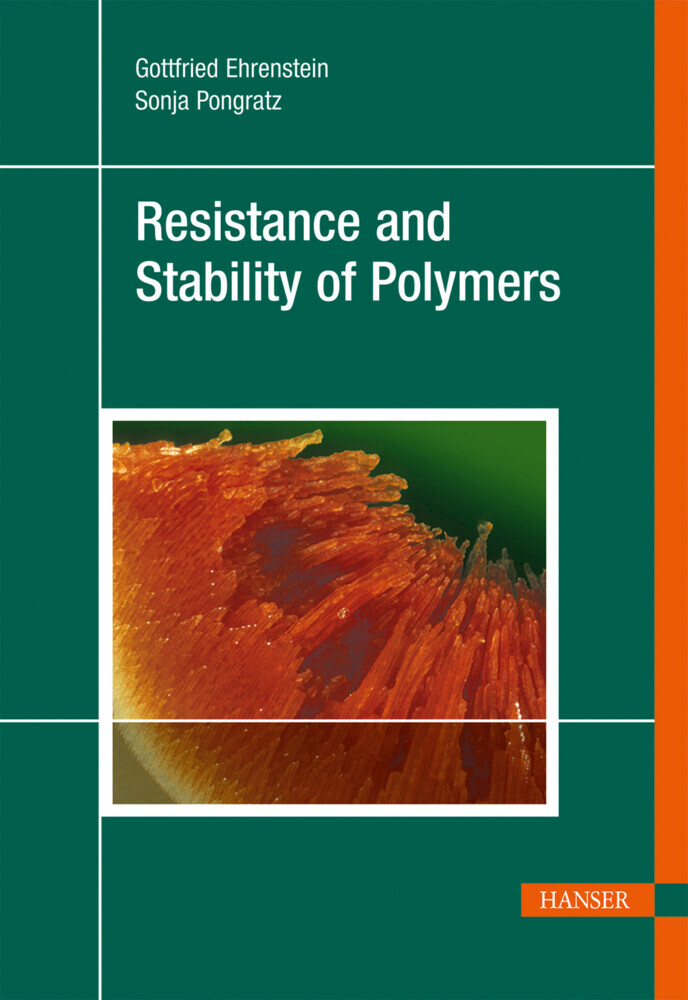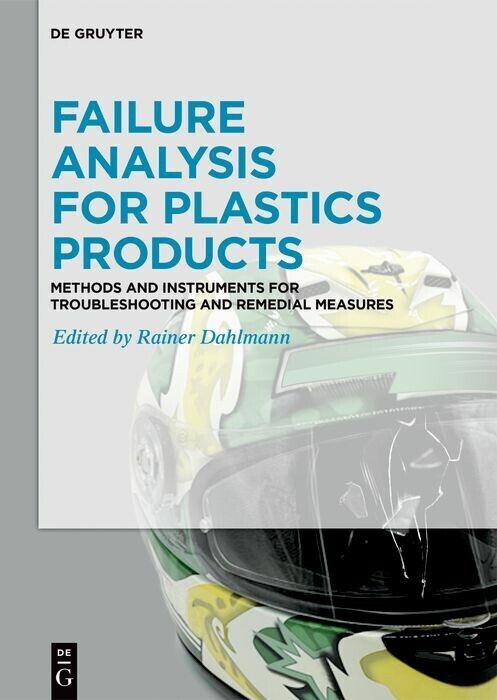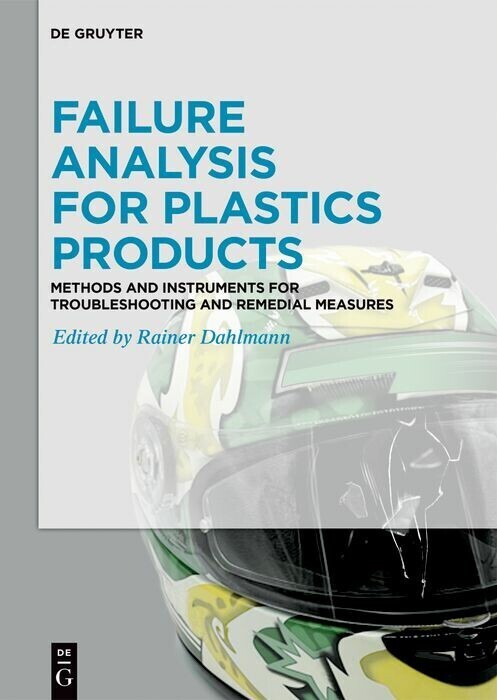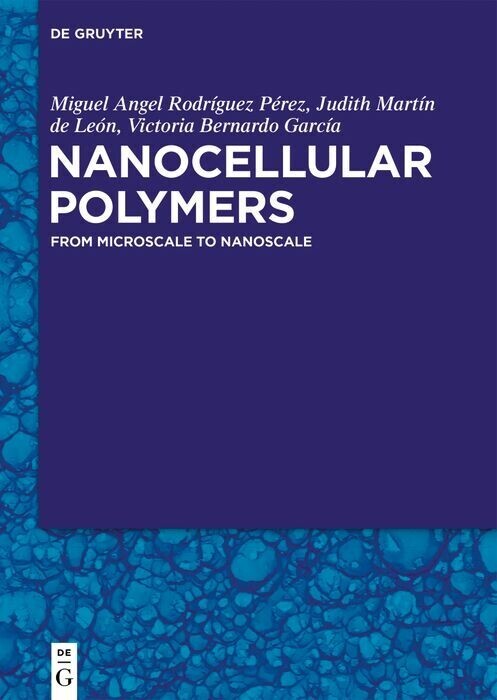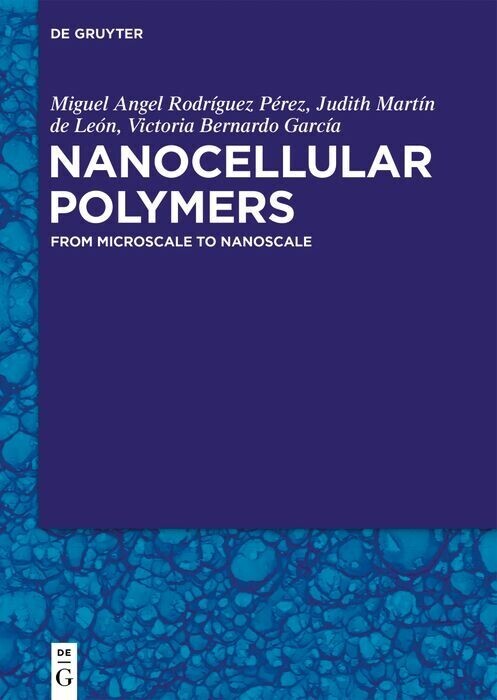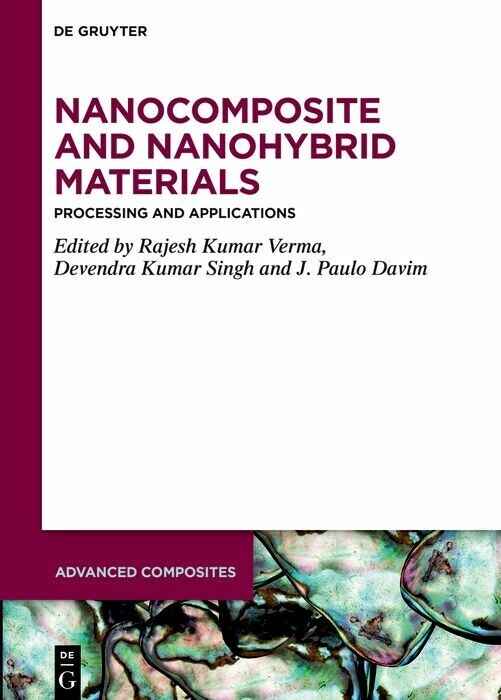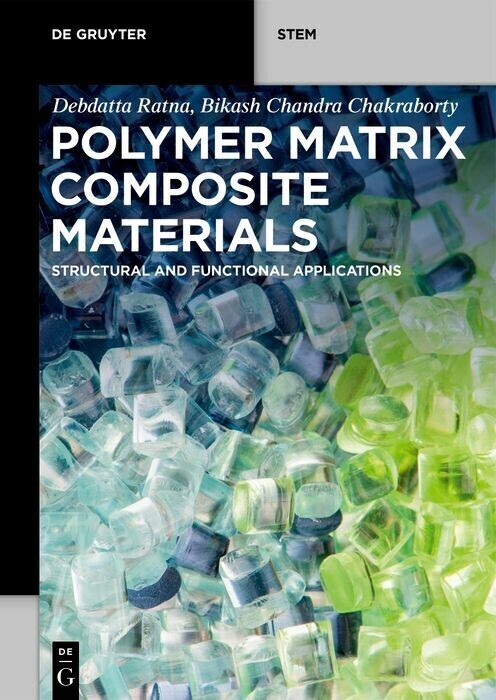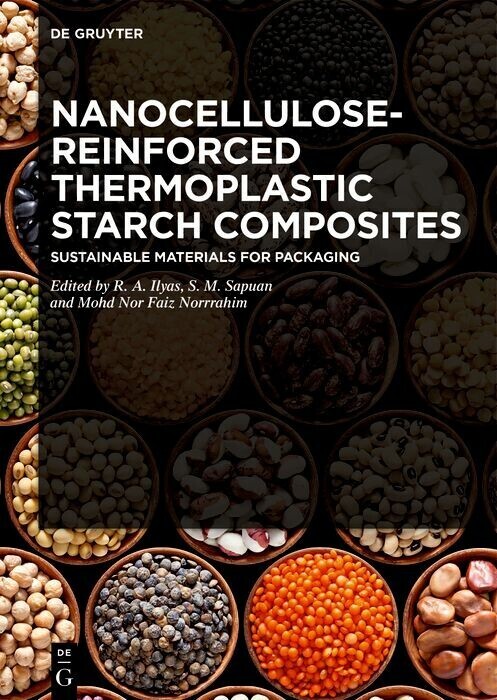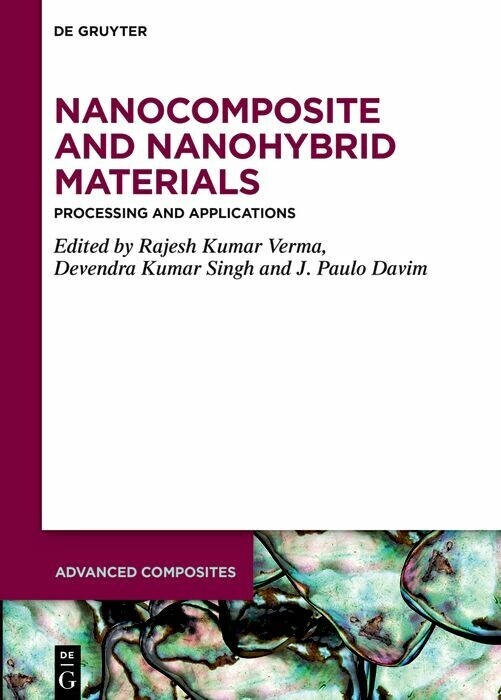Resistance and Stability of Polymers
The stability and resistance of polymeric materials determine whether they can be utilized in a
given application. Authoritative and reliable material information is needed during the material
selection process and this information must consider the influences of material manufacturing,
compounding and stabilization, processing, part design, use and subsequent disposal/recycling.
This book is based on the review of more than 1200 literature sources and represents a comprehensive overview of the current know-how regarding the stability and resistance of thermoplastics, thermosets, elastomers as well as the most commonly used reinforcementsand additives.
Extensive tables document material resistance to given media, facilitating appropriate material selection or stabilization for a given application.
Contents Volume 1:
Principles of Aging
Testing Methods
Stabilization
Influence of Processing and Use
Resistance to Thermal and Thermal-Oxidative Loads, Weathering, Chemicals, Ionizing Radiation,
Microorganisms, Biological Influences, and Mechanical Loads
Creep and Fatigue of Reinforced Polymers
Contents Volume 2:
Chemical Resistance Tables
White Lists of Media Influence (According to DIBt)
References
Index
1;Preface;8
given application. Authoritative and reliable material information is needed during the material
selection process and this information must consider the influences of material manufacturing,
compounding and stabilization, processing, part design, use and subsequent disposal/recycling.
This book is based on the review of more than 1200 literature sources and represents a comprehensive overview of the current know-how regarding the stability and resistance of thermoplastics, thermosets, elastomers as well as the most commonly used reinforcementsand additives.
Extensive tables document material resistance to given media, facilitating appropriate material selection or stabilization for a given application.
Contents Volume 1:
Principles of Aging
Testing Methods
Stabilization
Influence of Processing and Use
Resistance to Thermal and Thermal-Oxidative Loads, Weathering, Chemicals, Ionizing Radiation,
Microorganisms, Biological Influences, and Mechanical Loads
Creep and Fatigue of Reinforced Polymers
Contents Volume 2:
Chemical Resistance Tables
White Lists of Media Influence (According to DIBt)
References
Index
1;Preface;82;Table of Contents;103;1 Principles of Aging;263.1;1.1 An Introduction to Polymers;293.1.1;1.1.1 Thermoplastics;293.1.2;1.1.2 Thermoplastic Elastomers;313.1.3;1.1.3 Elastomers;313.1.4;1.1.4 Thermosets (EP Resins);323.1.4.1;1.1.4.1 Epoxy Resins (EP Resins);333.1.4.2;1.1.4.2 Phenolic Resins (PF Resin);403.1.4.3;1.1.4.3 Unsaturaded Polyesters (UP Resins);443.1.4.4;1.1.4.4 Vinyl Ester Resin (VE Resin);483.2;1.2 General Remarks, Definition of Terms;513.2.1;1.2.1 Definition of Aging;513.2.2;1.2.2 Additional Concepts;533.3;1.3 Short and Long-Term Behavior;543.3.1;1.3.1 Softening Behavior;543.3.2;1.3.2 Aging Behavior;553.3.3;1.3.3 Chemical Aging Processes (Chemical Degradation);563.3.4;1.3.4 Physical Aging Processes and Physical Aging;573.3.4.1;1.3.4.1 Physical Aging Processes;573.3.4.2;1.3.4.2 Physical Aging;593.4;1.4 Influencing Factors;603.4.1;1.4.1 Effect of Temperature;623.4.1.1;1.4.1.1 Accelerative Effect of Temperature;623.4.1.2;1.4.1.2 Chemical Degradation;643.4.1.3;1.4.1.3 Physical Aging Processes;703.4.2;1.4.2 Effects of Oxygen;703.4.2.1;1.4.2.1 Chemical Degradation;713.4.2.2;1.4.2.2 Physical Aging Processes - Chemo-Crystallization;763.4.2.3;1.4.2.3 Effects of Ozone;773.4.3;1.4.3 Influence of Water;793.4.3.1;1.4.3.1 Chemical Degradation (Hydrolysis);793.4.3.2;1.4.3.2 Physical Aging Processes;803.4.3.3;1.4.3.3 Mechanical Effects of Water;803.4.4;1.4.4 Influence of Mechanical Load;813.4.5;1.4.5 Influence of Chemical and Physical Structure;833.4.5.1;1.4.5.1 Influence of Chemical Structure;833.4.5.2;1.4.5.2 Influence of Physical Structure;853.4.6;1.4.6 Influence of Production Method, Catalyst Residue, and Metallic Contaminations;893.4.7;1.4.7 Additives;903.4.7.1;1.4.7.1 Glass Fibers;903.4.7.2;1.4.7.2 Fillers;913.4.7.3;1.4.7.3 Pigments;913.4.7.4;1.4.7.4 Influence of Chemical Purity;943.4.7.5;1.4.7.5 Flame Retardation Using Halogen Compounds;943.4.8;1.4.8 Effect of Radiation;943.4.8.1;1.4.8.1 Ultraviolet Radiation;943.4.8.2;1.4.8.2 Ionizing Radiation;973.4.9;1.4.9 Atmospheric Effects;973.4.9.1;1.4.9.1 UV Light;983.4.9.2;1.4.9.2 Temperature;983.4.9.3;1.4.9.3 Humidity, Water;1003.4.9.4;1.4.9.4 Corrosive Gases;1013.4.9.5;1.4.9.5 Solid Contaminations;1043.4.9.6;1.4.9.6 Material History;1043.4.10;1.4.10 Influence of Chemicals;1053.4.10.1;1.4.10.1 Chemical Media Influence, Solvolysis;1063.4.10.2;1.4.10.2 Physical Media Influence;1063.4.11;1.4.11 Biological Influences;1073.5;1.5 Influence of Processing and Application;1073.5.1;1.5.1 Aging during Processing;1093.5.2;1.5.2 Aging during Service;1103.6;1.6 Service Life Prediction;1133.6.1;1.6.1 Prerequisites for Service Life Predictions;1143.6.1.1;1.6.1.1 Determining Influencing Factors;1143.6.1.2;1.6.1.2 Characterizing Damage Condition;1143.6.1.3;1.6.1.3 Range of Extrapolation;1143.6.2;1.6.2 Models for Service Life Prediction;1153.6.2.1;1.6.2.1 Phenomenological Description of Aging;1153.6.2.2;1.6.2.2 Standardized Processes;1173.6.2.3;1.6.2.3 Models for Changes in Properties with Time;1173.6.2.4;1.6.2.4 Arrhenius Equation;1193.6.2.5;1.6.2.5 Time-Temperature Shift;1213.6.3;1.6.3 Dimensioning to Meet a Specific Service Life;1293.6.3.1;1.6.3.1 Reduction Factors;1293.6.3.2;1.6.3.2 Service Life for Technical Parts Under Mainly Static Loads;1423.6.3.3;1.6.3.3 Service Life Under Dynamic Load;1503.6.3.4;1.6.3.4 Service Life of Pipes;1634;2 Testing Methods;1644.1;2.1 General Remarks;1684.1.1;2.1.1 Methods for Testing Service Life;1684.1.1.1;2.1.1.1 Simulation of Actual Conditions;1694.1.1.2;2.1.1.2 Accelerated Tests;1694.1.1.3;2.1.1.3 Equivalence of Radiant Energy Effect;1704.1.1.4;2.1.1.4 Parallel Aging;1704.1.2;2.1.2 Aging Criteria;1714.1.3;2.1.3 Measurement Methods;1724.1.3.1;2.1.3.1 Appearance and Surface Properties;1734.1.3.2;2.1.3.2 Mechanical Properties;1764.1.3.3;2.1.3.3 Change in Chemical (Molecular) Structure;1764.1.3.4;2.1.3.4 Measuring the Effectiveness of Antioxidants;1794.1.3.5;2.1.3.
1;Preface;8
2;Table of Contents;10
3;1 Principles of Aging;26
3.1;1.1 An Introduction to Polymers;29
3.1.1;1.1.1 Thermoplastics;29
3.1.2;1.1.2 Thermoplastic Elastomers;31
3.1.3;1.1.3 Elastomers;31
3.1.4;1.1.4 Thermosets (EP Resins);32
3.1.4.1;1.1.4.1 Epoxy Resins (EP Resins);33
3.1.4.2;1.1.4.2 Phenolic Resins (PF Resin);40
3.1.4.3;1.1.4.3 Unsaturaded Polyesters (UP Resins);44
3.1.4.4;1.1.4.4 Vinyl Ester Resin (VE Resin);48
3.2;1.2 General Remarks, Definition of Terms;51
3.2.1;1.2.1 Definition of Aging;51
3.2.2;1.2.2 Additional Concepts;53
3.3;1.3 Short and Long-Term Behavior;54
3.3.1;1.3.1 Softening Behavior;54
3.3.2;1.3.2 Aging Behavior;55
3.3.3;1.3.3 Chemical Aging Processes (Chemical Degradation);56
3.3.4;1.3.4 Physical Aging Processes and Physical Aging;57
3.3.4.1;1.3.4.1 Physical Aging Processes;57
3.3.4.2;1.3.4.2 Physical Aging;59
3.4;1.4 Influencing Factors;60
3.4.1;1.4.1 Effect of Temperature;62
3.4.1.1;1.4.1.1 Accelerative Effect of Temperature;62
3.4.1.2;1.4.1.2 Chemical Degradation;64
3.4.1.3;1.4.1.3 Physical Aging Processes;70
3.4.2;1.4.2 Effects of Oxygen;70
3.4.2.1;1.4.2.1 Chemical Degradation;71
3.4.2.2;1.4.2.2 Physical Aging Processes - Chemo-Crystallization;76
3.4.2.3;1.4.2.3 Effects of Ozone;77
3.4.3;1.4.3 Influence of Water;79
3.4.3.1;1.4.3.1 Chemical Degradation (Hydrolysis);79
3.4.3.2;1.4.3.2 Physical Aging Processes;80
3.4.3.3;1.4.3.3 Mechanical Effects of Water;80
3.4.4;1.4.4 Influence of Mechanical Load;81
3.4.5;1.4.5 Influence of Chemical and Physical Structure;83
3.4.5.1;1.4.5.1 Influence of Chemical Structure;83
3.4.5.2;1.4.5.2 Influence of Physical Structure;85
3.4.6;1.4.6 Influence of Production Method, Catalyst Residue, and Metallic Contaminations;89
3.4.7;1.4.7 Additives;90
3.4.7.1;1.4.7.1 Glass Fibers;90
3.4.7.2;1.4.7.2 Fillers;91
3.4.7.3;1.4.7.3 Pigments;91
3.4.7.4;1.4.7.4 Influence of Chemical Purity;94
3.4.7.5;1.4.7.5 Flame Retardation Using Halogen Compounds;94
3.4.8;1.4.8 Effect of Radiation;94
3.4.8.1;1.4.8.1 Ultraviolet Radiation;94
3.4.8.2;1.4.8.2 Ionizing Radiation;97
3.4.9;1.4.9 Atmospheric Effects;97
3.4.9.1;1.4.9.1 UV Light;98
3.4.9.2;1.4.9.2 Temperature;98
3.4.9.3;1.4.9.3 Humidity, Water;100
3.4.9.4;1.4.9.4 Corrosive Gases;101
3.4.9.5;1.4.9.5 Solid Contaminations;104
3.4.9.6;1.4.9.6 Material History;104
3.4.10;1.4.10 Influence of Chemicals;105
3.4.10.1;1.4.10.1 Chemical Media Influence, Solvolysis;106
3.4.10.2;1.4.10.2 Physical Media Influence;106
3.4.11;1.4.11 Biological Influences;107
3.5;1.5 Influence of Processing and Application;107
3.5.1;1.5.1 Aging during Processing;109
3.5.2;1.5.2 Aging during Service;110
3.6;1.6 Service Life Prediction;113
3.6.1;1.6.1 Prerequisites for Service Life Predictions;114
3.6.1.1;1.6.1.1 Determining Influencing Factors;114
3.6.1.2;1.6.1.2 Characterizing Damage Condition;114
3.6.1.3;1.6.1.3 Range of Extrapolation;114
3.6.2;1.6.2 Models for Service Life Prediction;115
3.6.2.1;1.6.2.1 Phenomenological Description of Aging;115
3.6.2.2;1.6.2.2 Standardized Processes;117
3.6.2.3;1.6.2.3 Models for Changes in Properties with Time;117
3.6.2.4;1.6.2.4 Arrhenius Equation;119
3.6.2.5;1.6.2.5 Time-Temperature Shift;121
3.6.3;1.6.3 Dimensioning to Meet a Specific Service Life;129
3.6.3.1;1.6.3.1 Reduction Factors;129
3.6.3.2;1.6.3.2 Service Life for Technical Parts Under Mainly Static Loads;142
3.6.3.3;1.6.3.3 Service Life Under Dynamic Load;150
3.6.3.4;1.6.3.4 Service Life of Pipes;163
4;2 Testing Methods;164
4.1;2.1 General Remarks;168
4.1.1;2.1.1 Methods for Testing Service Life;168
4.1.1.1;2.1.1.1 Simulation of Actual Conditions;169
4.1.1.2;2.1.1.2 Accelerated Tests;169
4.1.1.3;2.1.1.3 Equivalence of Radiant Energy Effect;170
4.1.1.4;2.1.1.4 Parallel Aging;170
4.1.2;2.1.2 Aging Criteria;171
4.1.3;2.1.3 Measurement Methods;172
4.1.3.1;2.1.3.1 Appearance and Surface Properties;173
4.1.3.2;2.1.3.2 Mechanical Properties;176
4.1.3.3;2.1.3.3 Change in Chemical (Molecular) St
Ehrenstein, Gottfried W.
Pongratz, Sonja
Anderson, Paul
| ISBN | 9783446437098 |
|---|---|
| Artikelnummer | 9783446437098 |
| Medientyp | E-Book - PDF |
| Copyrightjahr | 2013 |
| Verlag | Carl Hanser Fachbuchverlag |
| Umfang | 1460 Seiten |
| Sprache | Englisch |
| Kopierschutz | Digitales Wasserzeichen |

